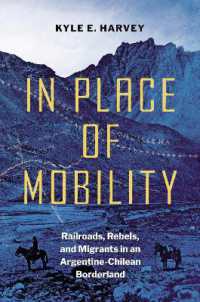- ホーム
- > 洋書
- > 英文書
- > Science / Mathematics
Full Description
This book provides a data-driven analysis of shared micromobility in China. The research topics cover travel characteristics of shared micromobility, external impacts of shared micromobility (e.g., the environmental and equity impacts and the relationship with 15-minute cities) and the planning issues of e-fences and bike lanes.







